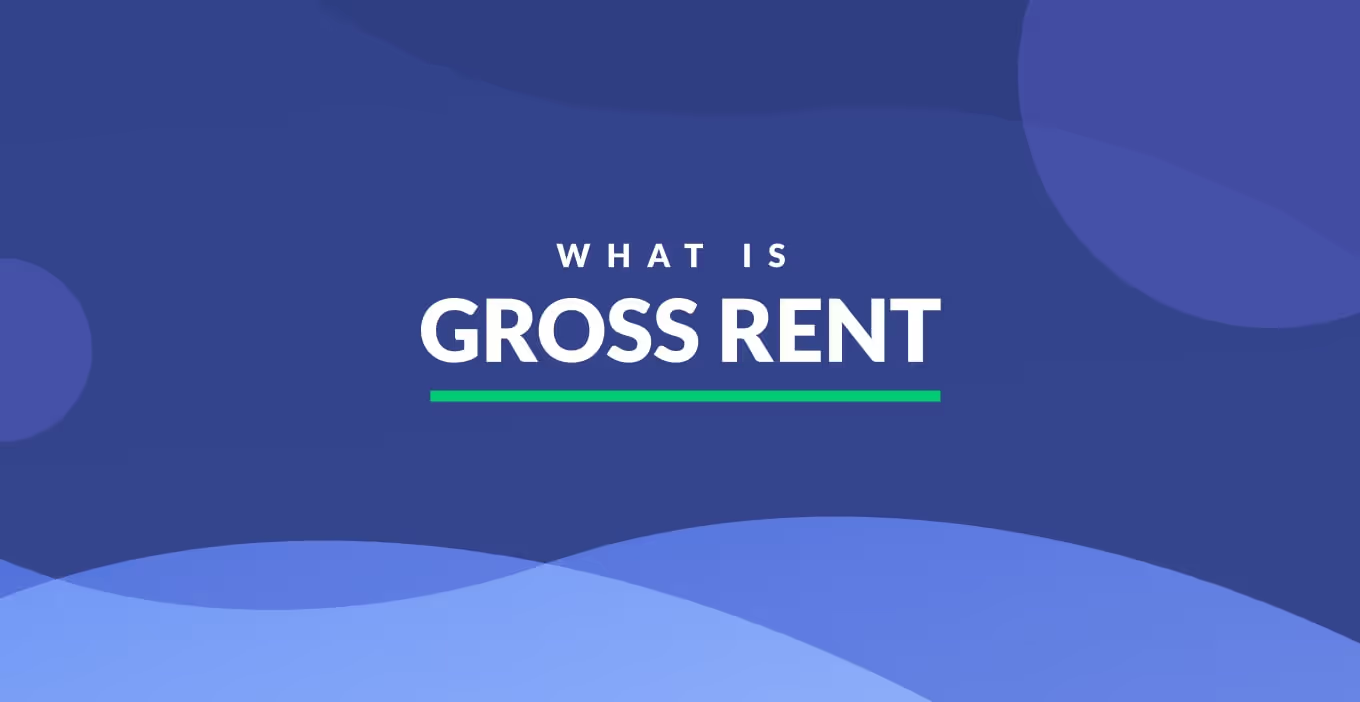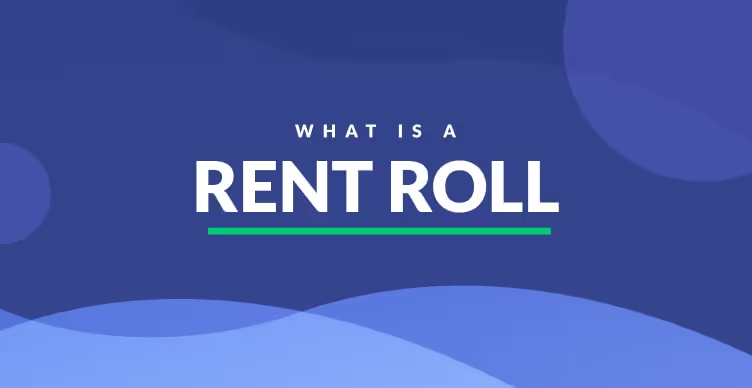As a real estate investor or agent, there are plenty of things to pay attention to. However, the arrangement with the tenant is likely at the top of the list.
A lease is the legal contract whereby a renter agrees to spend a particular amount of money for rent over a specified period of time to be able to use a particular rental property.
Rent often takes many forms, and it's based on the type of lease in place. If you don't understand what each option is, it's often hard to clearly focus on the operating costs, risks, and financials related to it.
With that, the structure and terms of your lease could affect the cash flow or value of the property. When focused on the weight your lease carries in influencing various assets, there's a lot to gain by understanding them in full detail.
However, the first thing to understand is the rental income options: gross rental income and net rent.
What's Gross Rent?
Gross rent is the full amount paid for the rental before other expenses are subtracted, such as utility or maintenance costs. The amount may also be broken down into gross operating income and gross scheduled income.
Most people use the term gross annual rental income to determine the full amount that the rental property makes for the property owner.
Gross scheduled income helps the landlord understand the actual rent potential for the property. It doesn't matter if there is a gross lease in place or if the unit is occupied. This is the rent that is collected from every occupied unit as well as the potential revenue from those units not occupied right now.
Gross rents help the landlord understand where improvements can be made to retain the customers currently renting. With that, you also learn where to change marketing efforts to fill those vacant units for actual returns and better occupancy rates.
The gross annual rental income or operating income is just the actual rent amount you collect from those occupied units. It's often from a gross lease, but there could be other lease options instead of the gross lease.
What's Net Rent or Net Operating Income for Property Expenses
Net rent is the amount that the landlord gets after subtracting the operating expenses from the gross rental income. Typically, operating expenses are the daily expenses that come with running the property, such as:
- Rental property taxes
- Maintenance
- Insurance
There could be other expenses for the property that could be partially or completely tax-deductible. These include capital expenditures, interest, depreciation, and loan payments. However, they aren't considered operating expenditures because they're not part of property operations.
Generally, it's easy to calculate the net operating income because you just need the gross rental income and subtract it from the expenses.
However, real estate investors must also be aware that the property owner can have either a gross or net lease. You can learn more about them below:
Net Rent vs. Gross Rent for a Gross Lease and Property Taxes
At first glance, it appears that tenants are the only ones who must be concerned about the terms. However, when you rent property, you have to know how both options affect you and what might be suitable for the renter.
Let's break that down:
Gross and net leases can be suitable based on the renting needs of the tenant. Gross leases mean that the tenant must pay rent at a flat rate for exclusive usage of the property. The landlord must cover everything else.
Typically, gross leases are quite flexible. You can customize the gross lease to meet the needs of the tenant and the landlord. For example, you may determine that the flat monthly rent payment includes waste pick-up or landscaping. However, the gross lease may be modified to include the principal requirements of the gross lease agreement but state that the tenant must pay electricity, and the landlord offers waste pick-up and janitorial services. This is often called a modified gross lease.
Ultimately, a gross lease is great for the tenant who only wants to pay rent at a flat rate. They get to remove variable costs that are associated with most commercial leases.
Net leases are the exact opposite of a modified gross lease or a traditional gross lease. Here, the landlord wants to shift all or part of the costs that tend to come with the property onto the tenant.
Then, the tenant pays for the variable expenses and normal operating expenses, and the landlord has to do nothing else. They get to take all that money as rental income. Conventionally, though, the tenant pays rent, and the landlord handles property taxes, utilities, and insurance for the property as with gross leases. However, net leases shift that responsibility to the tenant. Therefore, the tenant must handle operating expenses and property taxes among others.
If a net lease is the goal, here are the three options:
- Single Net Lease - Here, the tenant covers property taxes and pays rent.
- Double Net Lease - With a double net lease, the tenant covers insurance, property tax, and pays rent.
- Triple Net Lease - As the term suggests, the renter covers the net rent, but in the price comes the net insurance, net property tax, and net maintenance of the property.
If the tenant wants more control over their expenses, those net lease options let them do that, but that comes with more responsibility.
While this might be the type of lease the tenant chooses, most landlords still want renters to remit payments directly to them. That way, they can make the right payments on time and to the right parties. With that, there are fewer fees for late payments or miscalculated amounts.
Deciding between a gross and net lease is dependent on the person's rental needs. Sometimes, a gross lease lets them pay the flat fee and reduce variable expenses. However, a net lease gives the renter more control over maintenance than the property owner. With that, the operational costs could be lower.
Still, that leaves the tenant open to fluctuating insurance and tax costs, which must be absorbed by the tenant of the net rental.
Keeping both leases is great for a landlord because you probably have clients who want to rent the property with different needs. You can give them options for the property price so that they can make an informed decision that focuses on their requirements without lowering your property value.
Since gross leases are quite flexible, they can be modified to meet the tenant's needs. With that, the tenant has a better chance of not going over fair market value when dealing with different rental properties.
What's the Gross Rent Multiplier Calculation?
The gross rent multiplier (GRM) is the calculation used to determine how profitable similar properties might be within the same market based on their gross rental income amounts.
Ultimately, the gross rent multiplier formula works well when market rents change rapidly as they are now. In some ways, this gross rent multiplier is similar to when real estate investors run fair market value comparables based on the gross rental income that a property should or could be generating.
How to Calculate Your Gross Rent Multiplier
The gross rent multiplier formula is this:
- Gross rent multiplier equals the property price or property value divided by the gross rental income
To explain the gross rent multiplier better, here's an example: You have a three-unit multi-family property. It produces gross annual rents of about $43,200 and has an asking price of $300,000 for each unit. Ultimately, the GRM is 6.95 because you take:
- $300,000 (property price) divided by $43,200 (gross rental income) to equal 6.95.
By itself, that number isn't good or bad because there are no comparison options. Generally, though, most investors use the lower GRM number compared to similar properties within the same market to indicate a better investment. This is because that property generates more gross income and pays for itself quicker than alternative properties.
Other Ways to Use GRM
You may also use the GRM formula to find out what property price you should pay or what that gross rental income amount should be. However, you must know two out of three variables.
For example, the GRM is 7.5 for other properties in that same market. Therefore, the gross rental income should be about $53,333 if the asking price is $400,000.
- The gross rent multiplier is the property price divided by the gross rental income
- The gross rental income is the property price divided by the gross rent multiplier.
Therefore, you have a $400,000 property price and divide that by the GRM of 7.5 to come up with a gross rental income of $53,333.
Conclusion
Generally, you want to understand the two rental types and leases (gross rent/lease and net rent/lease) whether you are a tenant or a landlord. Now that you understand the differences between them and how to calculate your GRM, you can determine if your property value is on the money or if you should raise property price rents to get where you need to be.
Most property owners want to see their property value increase without having to spend so much themselves. Therefore, the gross rent/lease option could be ideal.
Frequently Asked Quesitons
What Is Gross Rent?
Gross Rent is the final amount that is paid by a tenant, including the costs of utilities such as electricity and water. This term may be used by property owners to determine how much income they would make in a certain amount of time.






.svg)
.svg)

